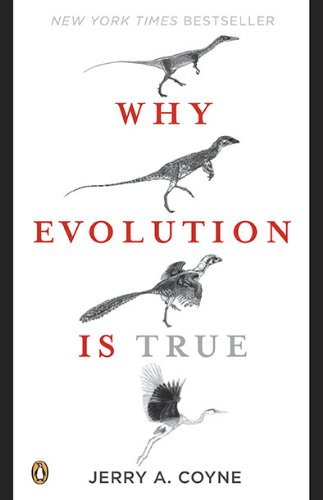Evolutionary Theory Prediction Comes True in Walking Fish
This is where the prediction comes in. If there were lobe-finned fishes but no terrestrial vertebrates 390 million years ago, and clearly terrestrial vertebrates 360 million years ago, where would you expect to find the transitional forms? Somewhere in between. Following this logic, Shubin predicted that if transitional forms existed, their fossils would be found in strata around 375 million years old. Moreover, the rocks would have to be from freshwater rather than marine sediments, because late lobefinned fish and early amphibians both lived in fresh water.
Searching his college geology textbook for a map of exposed freshwater sediments of the right age, Shubin and his colleagues zeroed in on a paleontologically unexplored region of the Canadian Arctic: Ellesmere Island, which sits in the Arctic Ocean north of Canada. And after five long years of fruitless and expensive searching, they finally hit pay dirt: a group of fossil skeletons stacked atop one another in sedimentary rock from an ancient stream. When Shubin first saw the fossil face poking out of the rock, he knew that he had at last found his transitional form. In honor of the local Inuit people and the donor who helped fund the expeditions, the fossil was named Tiktaalik roseae (“Tiktaalik” means “large freshwater fish” in Inuit, and “roseae” is a cryptic reference to the anonymous donor).
Tiktaalik has features that make it a direct link between the earlier lobe-finned fish and the later amphibians. With gills, scales, and fins, it was clearly a fish that lived its life in water. But it also has amphibian-like features. For one thing, its head is flattened like that of a salamander, with the eyes and nostrils on top rather than on the sides of the skull. This suggests that it lived in shallow water and could peer, and probably breathe, above the surface. The fins had become more robust, allowing the animal to flex itself upward to help survey its surroundings. And, like the early amphibians, Tiktaalik has a neck. Fish don’t have necks—their skull joins directly to their shoulders.
[...]
Tiktaalik itself was not ready for life ashore. For one thing, it had not yet evolved a limb that would allow it to walk. And it still had internal gills for breathing underwater. So we can make another prediction. Somewhere, in freshwater sediments about 370 million years old, we’ll find a very early land-dweller with reduced gills and limbs a bit sturdier than those of Tiktaalik.
Notes:
Tiktaalik was discovered right where evolution predicted it should exist, with traits that brought it closer to land without making it onto land, creating another fossil prediction for the future.
Folksonomies: evolution prediction
Taxonomies:
/pets/reptiles (0.717593)
/sports/fishing/freshwater fishing (0.430999)
/travel/tourist destinations/canada (0.390316)
Keywords:
Tiktaalik (0.931001 (positive:0.126698)), Fish Tiktaalik (0.763879 (positive:0.427441)), transitional forms (0.715151 (neutral:0.000000)), Evolutionary Theory Prediction (0.690556 (positive:0.427441)), terrestrial vertebrates (0.668809 (neutral:0.000000)), early amphibians (0.630845 (positive:0.280471)), paleontologically unexplored region (0.628035 (negative:-0.566971)), large freshwater fish (0.626607 (neutral:0.000000)), fossil face poking (0.626171 (neutral:0.000000)), college geology textbook (0.610681 (neutral:0.000000)), local Inuit people (0.609811 (positive:0.663958)), lobe-finned fishes (0.522722 (neutral:0.000000)), fossil prediction (0.508649 (negative:-0.229225)), marine sediments (0.479830 (neutral:0.000000)), freshwater sediments (0.476556 (neutral:0.000000)), lobe-finned fish (0.466356 (neutral:0.000000)), reduced gills (0.454402 (negative:-0.677180)), transitional form (0.452281 (neutral:0.000000)), fossil skeletons (0.450289 (neutral:0.000000)), later amphibians (0.431982 (neutral:0.000000)), ancient stream (0.428729 (neutral:0.000000)), Canadian Arctic (0.425447 (negative:-0.566971)), Shubin (0.424607 (neutral:0.000000)), Arctic Ocean (0.424506 (neutral:0.000000)), sedimentary rock (0.424373 (neutral:0.000000)), expensive searching (0.422662 (negative:-0.586402)), right age (0.421683 (neutral:0.000000)), anonymous donor (0.421139 (neutral:0.000000)), cryptic reference (0.419634 (positive:0.261174)), direct link (0.417399 (positive:0.455886))
Entities:
Tiktaalik:Company (0.856247 (negative:-0.058015)), Tiktaalik roseae:Person (0.566127 (negative:-0.398518)), Shubin:Person (0.406890 (neutral:0.000000)), Arctic Ocean:GeographicFeature (0.238499 (neutral:0.000000)), Canada:Country (0.192001 (neutral:0.000000)), paleontologically:City (0.190028 (negative:-0.566971)), 360 million years:Quantity (0.190028 (neutral:0.000000)), 370 million years:Quantity (0.190028 (neutral:0.000000)), 375 million years:Quantity (0.190028 (neutral:0.000000)), 390 million years:Quantity (0.190028 (neutral:0.000000))
Concepts:
Tetrapod (0.954472): dbpedia | freebase
Tiktaalik (0.868680): dbpedia | freebase | yago
Fish (0.837965): dbpedia | freebase | opencyc
Sarcopterygii (0.800305): dbpedia | freebase
Coelacanth (0.787082): geo | dbpedia | freebase
Fossil (0.728630): dbpedia | freebase | opencyc
Osteichthyes (0.653673): dbpedia | freebase
Transitional fossil (0.571282): dbpedia | freebase





